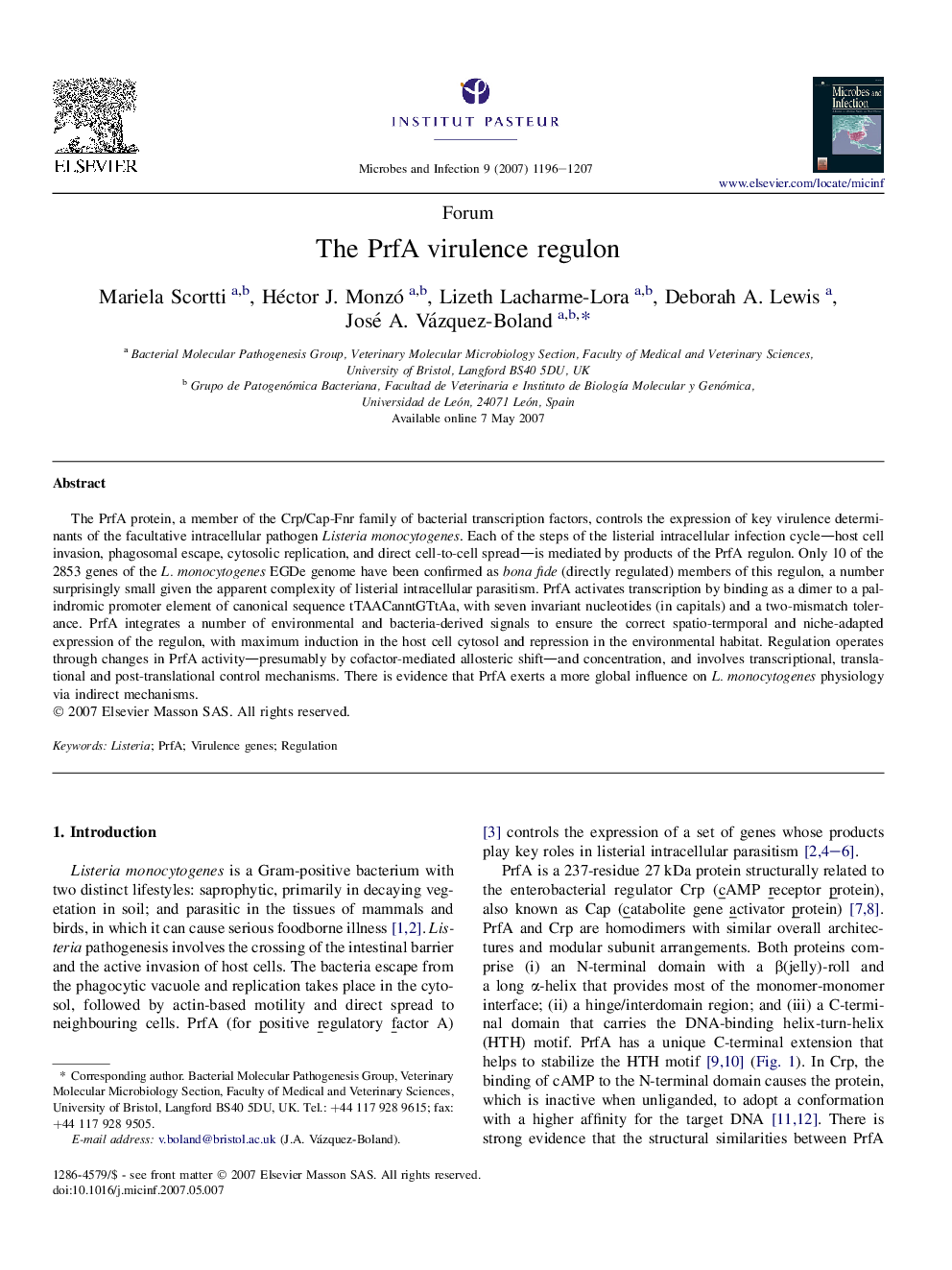| Article ID | Journal | Published Year | Pages | File Type |
|---|---|---|---|---|
| 3415590 | Microbes and Infection | 2007 | 12 Pages |
The PrfA protein, a member of the Crp/Cap-Fnr family of bacterial transcription factors, controls the expression of key virulence determinants of the facultative intracellular pathogen Listeria monocytogenes. Each of the steps of the listerial intracellular infection cycle—host cell invasion, phagosomal escape, cytosolic replication, and direct cell-to-cell spread—is mediated by products of the PrfA regulon. Only 10 of the 2853 genes of the L. monocytogenes EGDe genome have been confirmed as bona fide (directly regulated) members of this regulon, a number surprisingly small given the apparent complexity of listerial intracellular parasitism. PrfA activates transcription by binding as a dimer to a palindromic promoter element of canonical sequence tTAACanntGTtAa, with seven invariant nucleotides (in capitals) and a two-mismatch tolerance. PrfA integrates a number of environmental and bacteria-derived signals to ensure the correct spatio-termporal and niche-adapted expression of the regulon, with maximum induction in the host cell cytosol and repression in the environmental habitat. Regulation operates through changes in PrfA activity—presumably by cofactor-mediated allosteric shift—and concentration, and involves transcriptional, translational and post-translational control mechanisms. There is evidence that PrfA exerts a more global influence on L. monocytogenes physiology via indirect mechanisms.
